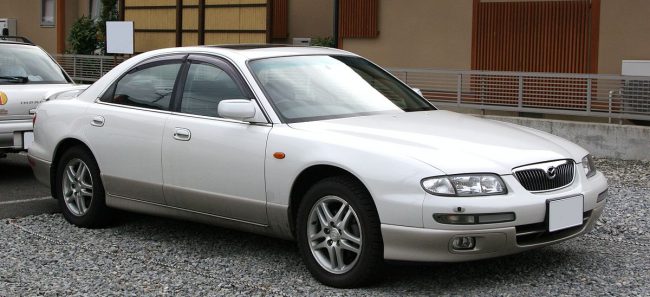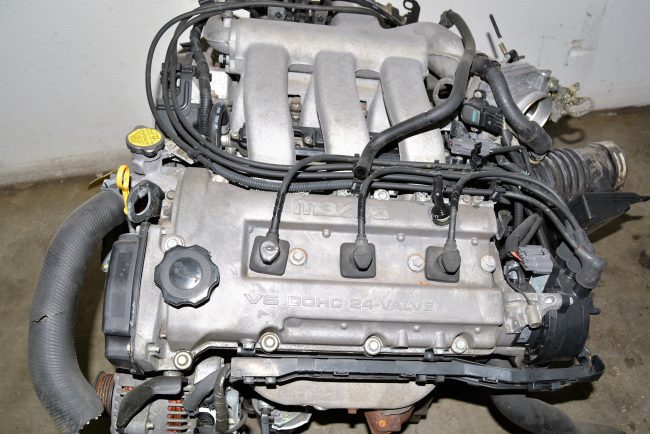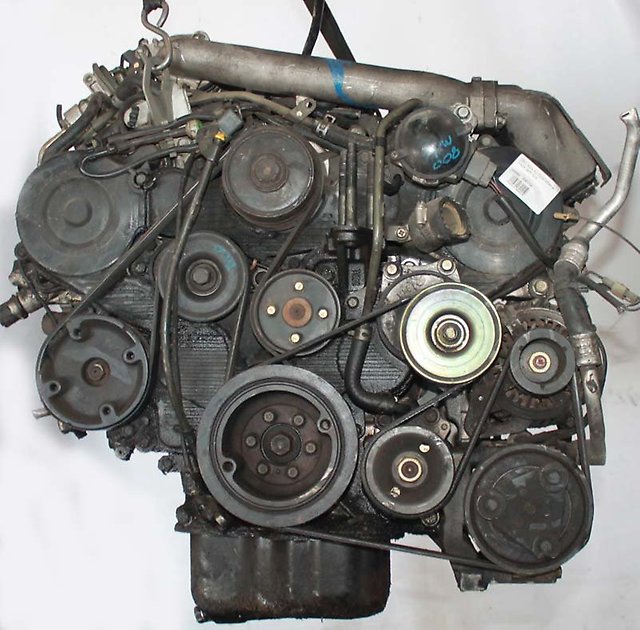
Mazda Millenia engines
Content
Mazda is a car concern with almost a century of history, has released a lot of cars on public roads.
The period from the 90s of the last century and the beginning of the 00s of this century has become the most productive in the company's activities, as the list of model lines has noticeably expanded.
Among the premium cars, the Millenia model stands out. This car does not differ in anything remarkable, however, due to the technical, functional part and good reliability, it still has many admirers.
Read more about the history of the creation of the Mazda Milenia, the motors used in the design of the model and their characteristics, read below.
A few words about the lineup
Mazda Millenia is a rather successful and popular model of the Japanese manufacturer. Its production was not long, however, cars under the summarized name were produced in different numbers from 1994 to 2002. In fact, Millenia is a relatively inexpensive premium model.
It was designed and produced as part of the Amati project. Back in the late 80s of the 20th century, Mazda thought about creating a separate brand within its automaker, under which it was going to sell inexpensive premium cars. Unfortunately, the Japanese failed to realize such an undertaking to the end. Under the auspices of Amati, Mazda released only a few sedans and coupes, some of which were successful, while others did not find laurels.
The Millenia is one of the most successful cars from the extinct Mazda sub-brand. Under this name, it was sold in Europe and America. At home, the car was sold as the Mazda Xedos 9.
The 4-door executive class sedan had good functionality, moderately high power and excellent reliability, but even such characteristics did not allow it to become a hit in the automotive market. Blame all the competitors of the Japanese automaker.
Between the early 80s and the mid 00s, there was fierce competition among premium models and the opening of the new Amati project from Mazda was an extremely risky undertaking by the company. In part he was justified, in part he was not. In any case, the automaker did not suffer significant financial losses, but managed to gain experience in the creation and subsequent popularization of executive class cars. Of course, Mazda failed to compete on equal terms with such giants of the sphere as Lexus, Mercedes-Benz and BMW, but still left its mark. No wonder Milenia is still found on the roads of Europe, the USA and has many admirers.
Engines installed on Mazda Millennia
The Millenia model was equipped with only three gasoline-powered power plants:
- KF-ZE - an engine with a volume of 2-2,5 liters and a power of 160-200 horsepower. It was created both in sports, reinforced variations, and completely ordinary ones for everyday driving.
- KL-DE - a unit produced in one variation and having a 2,5-liter volume with 170 "horses".
- KJ-ZEM is the most powerful engine in the lineup with a volume of 2,2-2,3 liters, but with an untwisted power of up to 220 horsepower through the use of a turbine (compressor).
Samples of the Mazda Millenia, released before 2000, were equipped equally with all the marked engines. With the beginning of this century, the automaker abandoned the use of KL-DE and KJ-ZEM, giving preference to the modified KF-ZE samples. Detailed characteristics of each unit are set out in the tables below:
Specifications of the KF-ZE engine
| Manufacturer | Mazda |
|---|---|
| Motor brand | KF-ZE |
| Years of production | 1994-2002 |
| cylinder head (cylinder head) | Aluminum |
| Food | Injector |
| Construction scheme | V-shaped (V6) |
| No. of cylinders (valves per cylinder) | 6 (4) |
| The piston stroke, mm | 70-74 |
| Cylinder diameter, mm | 78-85 |
| Compression ratio, bar | 10 |
| Engine displacement, cubic meters cm | 2-000 |
| Power, HP | 160-200 |
| Fuel | Gasoline (AI-98) |
| Fuel consumption per 100 km of track | |
| - town | 10 |
| - track | 5.7 |
| - mixed mode | 8 |
Specifications of the KL-DE engine
| Manufacturer | Mazda |
|---|---|
| Motor brand | KL-TH |
| Years of production | 1994-2000 |
| cylinder head (cylinder head) | Aluminum |
| Food | Injector |
| Construction scheme | V-shaped (V6) |
| No. of cylinders (valves per cylinder) | 6 (4) |
| The piston stroke, mm | 74 |
| Cylinder diameter, mm | 85 |
| Compression ratio, bar | 9.2 |
| Engine displacement, cubic meters cm | 2497 |
| Power, HP | 170 |
| Fuel | Gasoline (AI-98) |
| Fuel consumption per 100 km of track | |
| - town | 12 |
| - track | 7 |
| - mixed mode | 9.2 |
Specifications of the KJ-ZEM engine
| Manufacturer | Mazda |
|---|---|
| Motor brand | KJ-ZEM |
| Years of production | 1994-2000 |
| cylinder head (cylinder head) | Aluminum |
| Food | Injector |
| Construction scheme | V-shaped (V6) |
| No. of cylinders (valves per cylinder) | 6 (4) |
| The piston stroke, mm | 74 |
| Cylinder diameter, mm | 80 |
| Compression ratio, bar | 10 |
| Engine displacement, cubic meters cm | 2254 |
| Power, HP | 200-220 |
| Fuel | Gasoline (AI-98) |
| Fuel consumption per 100 km of track | |
| - town | 12 |
| - track | 6 |
| - mixed mode | 9.5 |
Which engine to choose Mazda Milenia
The Japanese approached the Amati project and the creation of Milenia responsibly and with high quality. All cars from the lineup and their engines are assembled more than reliably and rarely cause trouble during operation. Surprisingly, you can also find millionaire engines with a declared resource of up to 600 kilometers.
Judging by the reviews of the owners of the Mazda Milenia, the most reliable and trouble-free unit in terms of use is the KF-ZE, which is only slightly inferior to the KL-DE. Almost all car owners note the quality of these internal combustion engines and the absence of typical malfunctions. In principle, there is nothing surprising in this, because KF-ZE and KL-DE were modified several times and produced in a more perfect form.
As for the KJ-ZEM motor, blaming it for being prone to breakdowns or low reliability is unacceptable. However, the presence of a turbine in its design significantly reduces the qualification of the internal combustion engine in terms of overall quality. As active exploiters of KJ-ZEM note, it has two typical "sores":
- Problems with oil supply (from leaking gaskets to lack of pressure due to serious malfunctions in the oil pump).
- Compressor malfunctions in which the engine simply refuses to work and requires overhaul.
Of course, the motor is maintainable and inexpensive to operate, but is it worth it to add trouble to yourself when acquiring it for the sake of a turbine? Many will agree that it is not. Such an approach, at least, is inexpedient and does not differ in any rational grain.




